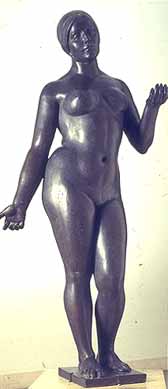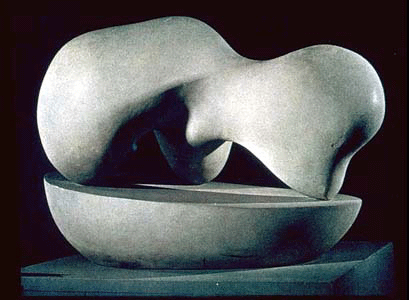
Page 5 of 17
Read the text and study the images below then move on to page 6.
5. Form I
Sculpture is fundamentally concerned with three-dimensional form, so that it can never be underplayed as it might be in a painting. But the physical bulk of the form can be exaggerated or understated, as we see in a comparison of works by French Maillol and Italian Giacometti, both sculptors working in bronze in the twentieth century.


above Maillol, Summer, bronze, 1910-1911. Metropolitan Museum of Art, New York.
above Giacometti, Standing Woman, bronze, c. 1958-9. Tate Gallery, London.

above Jean Arp,
Human Concretion, stone, 1933. Kunsthaus, Zürich.